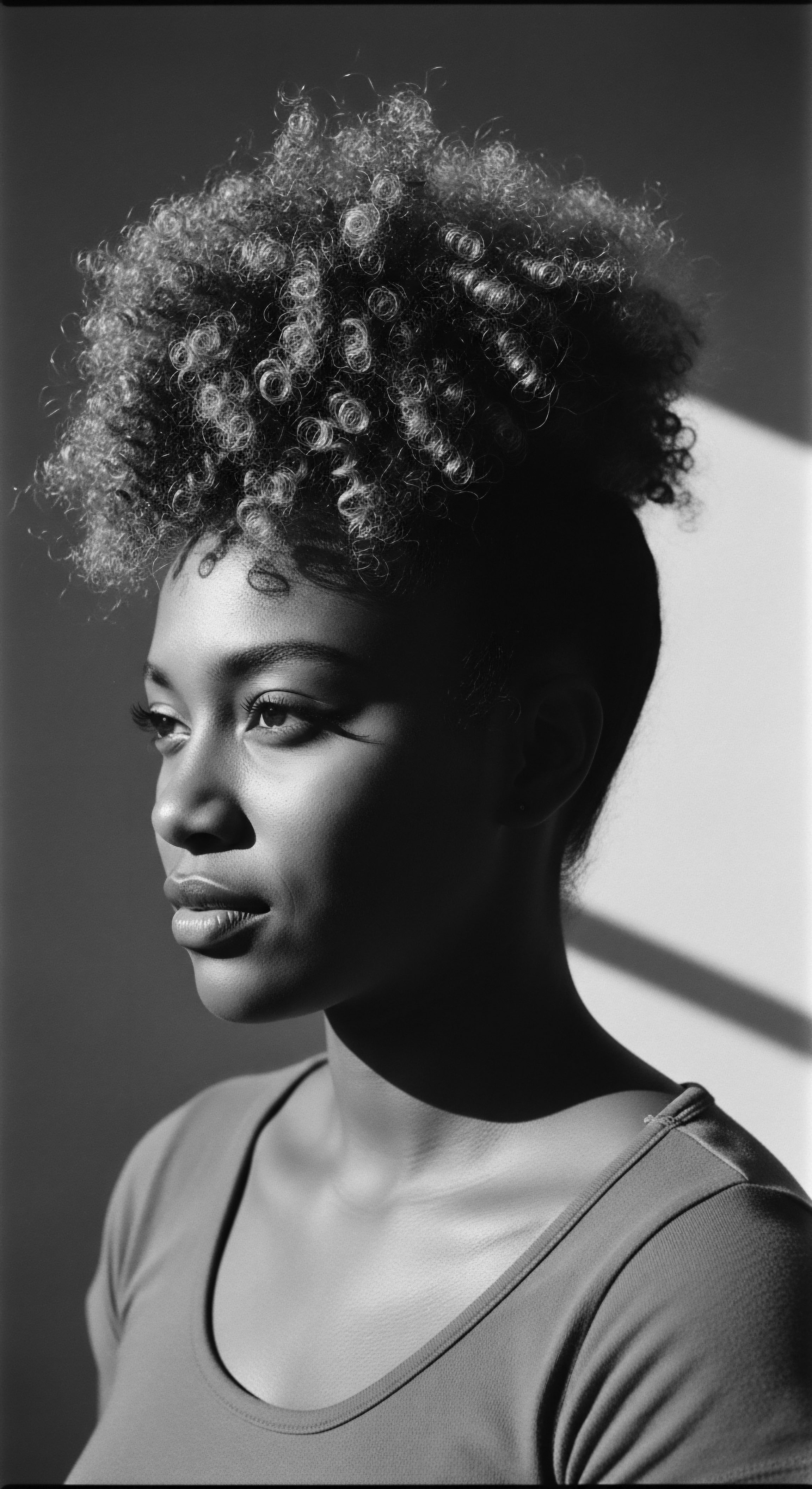
Fundamentals
A hair regimen, in its most elemental expression, represents a deliberate collection of practices and rituals woven into the very fabric of tending to one’s hair. It is not merely a sequence of steps; rather, it is a conscious commitment to the health, vitality, and aesthetic presentation of the hair strands, a process that unfolds over time with consistency and intention. For those whose hair bears the intricate coils and textures of African descent, the understanding of a hair regimen extends far beyond the surface-level application of products. It encompasses a recognition of unique biological needs, an honoring of inherited wisdom, and a profound connection to ancestral heritage.
This approach to hair care begins with foundational elements that ensure the hair’s basic requirements are met. The hair, as a living fiber, needs thoughtful engagement to truly flourish. The daily or weekly rhythm of a regimen provides a framework for addressing common concerns specific to textured hair, such as moisture retention, detangling, and protection.
A hair regimen is a deliberate, consistent sequence of care practices, reflecting a profound commitment to the health and heritage of textured hair.
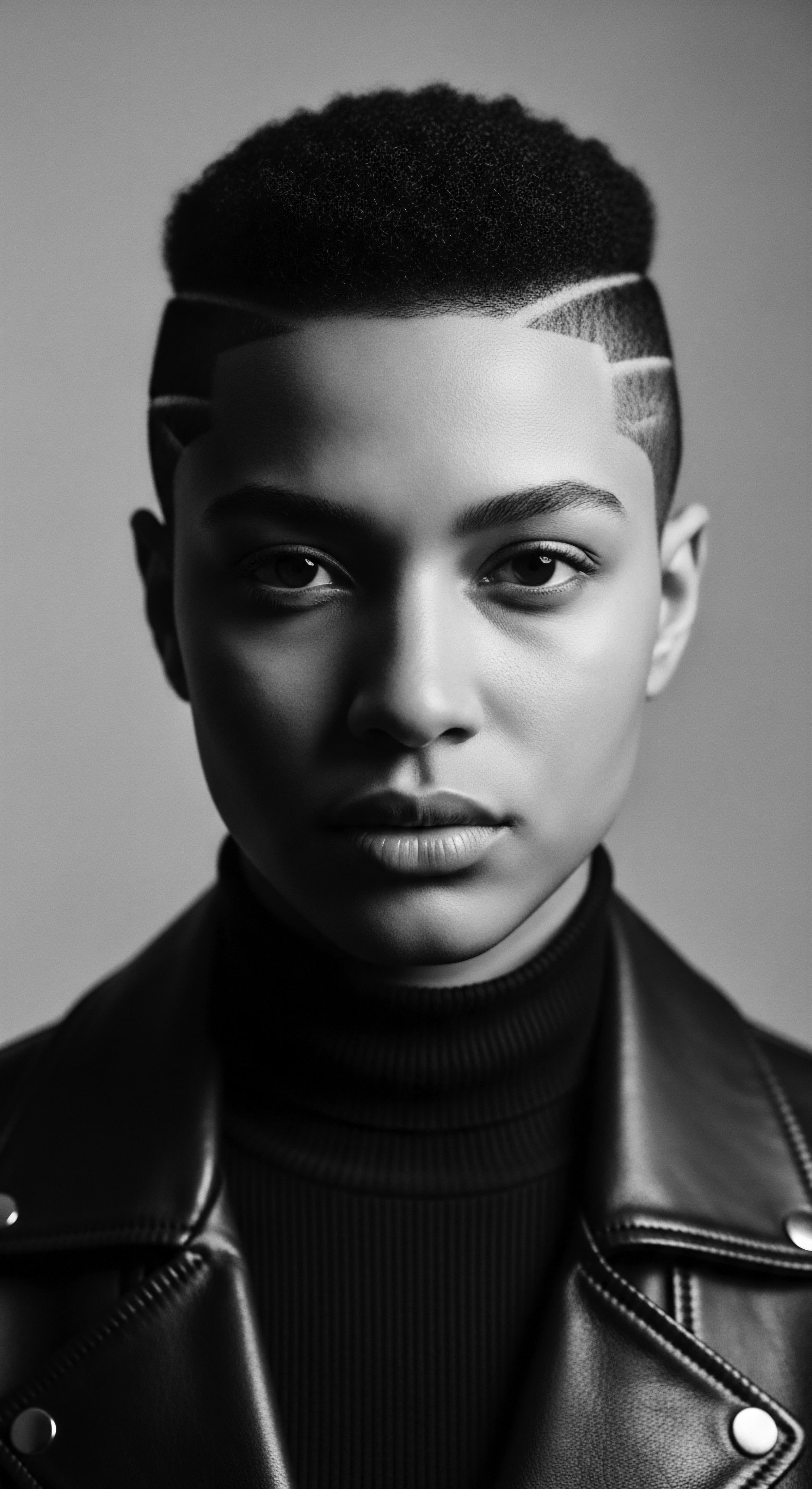
Understanding the Building Blocks of Care
At its heart, any effective hair regimen rests upon several foundational pillars, each contributing to the hair’s resilience and radiant appearance. These pillars, though seemingly straightforward, hold deeper implications when viewed through the lens of textured hair, which often possesses a different structural architecture and hydration profile compared to straighter hair types.
- Cleansing ❉ This initial step purifies the scalp and hair, removing build-up from products, environmental impurities, and natural oils. For textured hair, balancing effective cleansing with moisture preservation is a delicate art, often necessitating gentle, sulfate-free formulations to prevent stripping the hair’s intrinsic moisture.
- Conditioning ❉ Following cleansing, conditioning replenishes moisture and smooths the cuticle layer, making hair softer, more pliable, and easier to manage. Deep conditioners and leave-in treatments become invaluable allies for textured hair, providing sustained hydration and protection against breakage.
- Moisturizing ❉ Given the tendency of textured hair to experience dryness, consistent moisture application is paramount. This often involves water-based products, followed by oils or butters to seal in the hydration, a practice echoing ancient techniques that relied on natural emollients.
- Styling and Protection ❉ How one manipulates and protects the hair is as crucial as the products applied. Protective styles, such as braids, twists, or cornrows, reduce daily manipulation and shield the hair from environmental stressors. These styles, deeply rooted in historical African practices, minimize breakage and promote length retention.

The Rhythm of the Hair Regimen
The frequency and specific methods employed within a hair regimen are not universal edicts; rather, they are tailored to the individual’s hair type, lifestyle, and the environmental conditions encountered. Some may find a weekly wash-day rhythm sustains their hair’s needs, allowing for thorough cleansing and deep conditioning. Others might engage in more frequent co-washing to refresh curls and infuse moisture without full shampooing.
The concept of a regimen, then, adapts, a living process that responds to the hair’s whispers and demands. It is a continuous dialogue between the individual and their strands, seeking optimal balance.

Intermediate
As we move beyond the basic tenets, the true spirit of a hair regimen begins to reveal itself, particularly when considering textured hair. It is not merely a series of steps, but an intentional cultivation of health and expression, shaped by generations of practice and a deep understanding of unique hair biology. This deeper understanding moves beyond product application, embracing the philosophy that hair care is a form of self-attunement and a connection to something larger.
For Black and mixed-race hair experiences, the Hair Regimen assumes a more profound significance. It becomes a vessel for preserving cultural practices and navigating societal perceptions. The choices made within a regimen often reflect a conscious decision to honor heritage, to nurture strands that have, for centuries, been both a source of pride and a point of contention in various societies. The meaning of “Hair Regimen” expands to include the historical echoes that inform present-day practices.

Ancestral Echoes in Contemporary Care
Long before the advent of modern cosmetic science, ancestral communities understood the fundamental principles of hair health. Their practices, though often lacking the precise scientific nomenclature of today, were rooted in keen observation and an intimate knowledge of natural resources. These historical approaches to hair care, often passed down through oral tradition and communal grooming rituals, form the bedrock of many contemporary regimens for textured hair.
Consider the widespread use of natural butters and oils in African hair care. Ingredients such as Shea Butter, derived from the Vitellaria paradoxa tree, and Coconut Oil have been utilized for generations to nourish and protect hair. These substances are not merely moisturizers; they are legacies, imbued with the wisdom of those who understood their hair’s particular thirst and how to quench it using what the earth provided. This historical precedent informs the modern understanding that textured hair often benefits immensely from consistent sealing of moisture to prevent dryness and breakage.
Hair regimens for textured hair extend beyond basic steps, embodying a continuous thread of ancestral wisdom and cultural resilience.
The act of braiding, twisting, and coiling hair into intricate patterns, a practice deeply embedded in African heritage, exemplifies a protective styling aspect of ancient regimens. These styles were not solely for aesthetic appeal; they minimized manipulation, preserved moisture, and protected strands from environmental exposure, thereby contributing to length retention. In many pre-colonial African societies, these hair styling processes were elaborate, taking hours or even days, and were viewed as social opportunities, strengthening communal bonds. This communal aspect underscores how hair care was intertwined with social cohesion and identity, not merely individual beautification.

The Tender Thread of Identity and Wellness
The Hair Regimen for textured hair transcends a purely cosmetic purpose; it becomes a dialogue between self and heritage, a conscious act of wellness that resonates with ancestral rhythms. The mindful selection of ingredients, the deliberate motions of detangling, the patience required for intricate braiding patterns—these acts connect the individual to a lineage of care. This connection is not merely theoretical; it manifests in the tangible health of the hair, leading to reduced breakage, increased length, and an overall vibrant appearance.
Moreover, the contemporary resurgence of natural hair movements globally has further solidified the Hair Regimen’s role as an act of self-acceptance and empowerment. By embracing natural textures and developing tailored regimens, individuals reclaim a narrative of beauty often suppressed by Eurocentric standards, a profound act of resistance against historical impositions. The hair regimen, in this light, becomes a declaration of identity, a visual story of pride, and a living continuation of ancestral traditions.
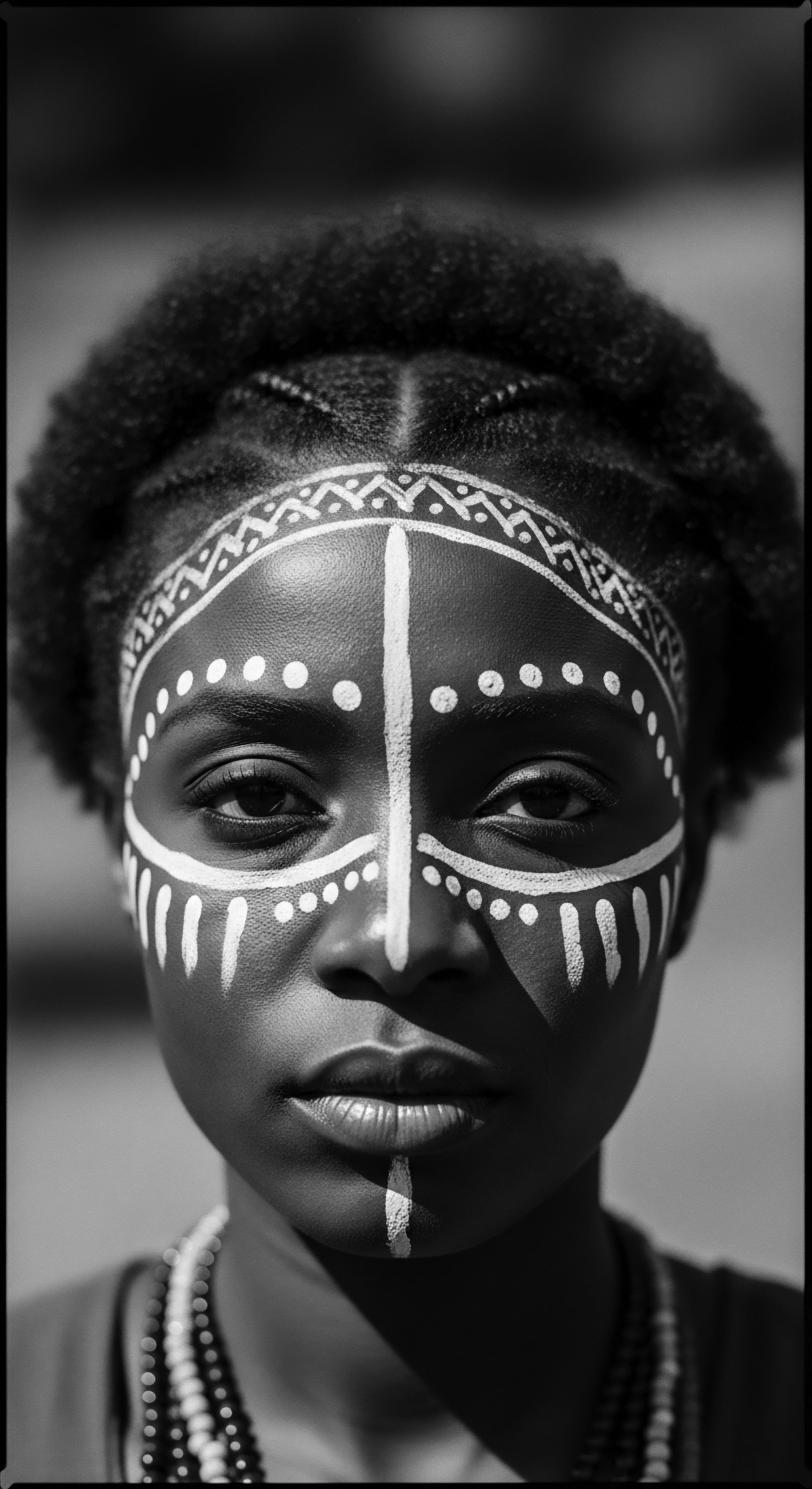
Academic
The concept of a Hair Regimen, particularly when examined through the rigorous lens of textured hair, moves beyond a mere routine to become a complex sociocultural construct, a site of profound biological interaction, and a historical archive of resilience and identity. It is, at its core, a systematized approach to hair care that is consciously adapted to the specific biophysical properties of the hair fiber, while simultaneously carrying layers of cultural, psychological, and even political significance. This meaning arises from centuries of lived experience, scientific observation, and the continuous negotiation of beauty standards within Black and mixed-race diasporic communities. A Hair Regimen, therefore, functions as both a responsive care protocol and a performative act of identity, delineating its historical journey from elemental biology and ancient practices, through the living traditions of care and community, to its role in voicing identity and shaping futures.
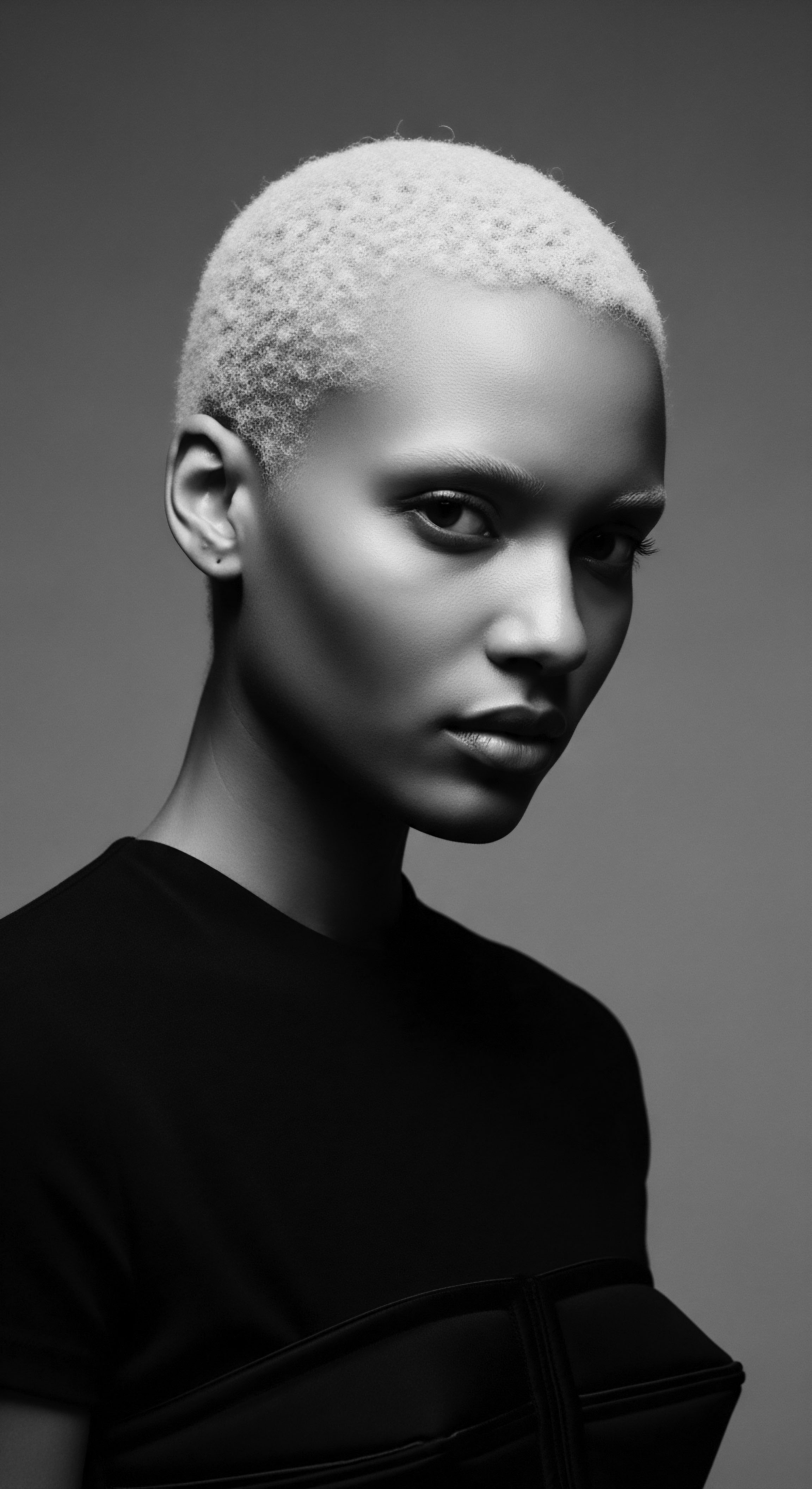
Echoes from the Source ❉ Biophysical Realities and Ancient Protocols
To truly understand the Hair Regimen for textured hair, one must begin with its elemental biology. Afro-textured hair, characterized by its elliptical cross-section and frequent twists along the fiber, exhibits unique properties that influence its interaction with moisture and its susceptibility to breakage. The helical structure creates numerous points of weakness, making it inherently more fragile than straighter hair types (Byrd & Tharps, 2014). This biological reality necessitates a regimen focused on moisture retention and minimizing mechanical stress.
Ancestral communities, long before modern trichology, developed sophisticated protocols to address these intrinsic properties. These were not random acts of grooming; they were codified systems of care, constituting early forms of Hair Regimens. In pre-colonial Africa, hair was not solely an aesthetic feature; it functioned as a language, conveying social status, age, marital status, ethnic identity, religion, wealth, and rank within a community.
The meticulous processes involved in creating and maintaining these styles—washing, combing, oiling, braiding, twisting, and adornment—were communal rituals, often taking hours or days to complete, serving as crucial social opportunities to strengthen familial and communal bonds (Patton, 2006). These practices, while outwardly stylistic, embodied deeply embedded hair regimens designed for preservation and cultural articulation.
A powerful historical example that illuminates this profound connection is the use of Chébé Powder by the Basara Arab women of Chad . This ancestral practice involves a Hair Regimen centered on the application of a blend of natural herbs, seeds, and plants, primarily Croton zambesicus, ground into a fine powder. This powder, often mixed with water or natural butters like shea butter, is applied to hydrated hair, then sealed by braiding. This centuries-old regimen, passed down through generations, is renowned for its ability to aid in length retention by preventing breakage and locking in moisture, especially for coily hair types prone to dryness.
While the powder itself does not stimulate new hair growth, its consistent application strengthens the hair shaft, reduces split ends, and enhances elasticity, allowing hair to attain remarkable length. This specific, meticulously executed regimen demonstrates an acute ancestral understanding of textured hair’s needs, transforming a daily care routine into a cultural legacy and a tangible expression of beauty and identity, long preceding contemporary scientific validations of moisture-sealing and protective styling.

The Tender Thread ❉ Living Traditions and Community Identity
The transatlantic slave trade systematically disrupted these ancestral hair regimens, forcibly shaving heads as a dehumanizing act to strip enslaved Africans of their cultural identity and self-esteem. Despite this profound assault, enslaved women demonstrated incredible resilience, finding ways to continue aspects of their hair care traditions using homemade products and techniques, preserving heritage through styles like braids and twists, sometimes even using them as maps to freedom (Tharps & Byrd, 2001). This period demonstrates the adaptive and resistant nature of the Hair Regimen, transforming it from a celebration of heritage into a silent act of defiance and survival.
The Hair Regimen, therefore, is not a static concept but a dynamic one, reflecting collective identity and societal struggles across time. Post-emancipation, the pressure to conform to Eurocentric beauty standards often meant chemically altering textured hair, a practice that, while offering perceived social acceptance, could also lead to significant damage and psychological distress (Banks, 2000; Oyedemi, 2016). The prevalence of hair straightening, through hot combs or chemical relaxers, represented a complex negotiation of identity and survival within a discriminatory societal framework (Rooks, 1996).
A hair regimen for textured hair is a historical narrative, embodying resilience, adaptation, and unwavering cultural expression across generations.
The emergence of the Natural Hair Movement in the 1960s and 1970s, as part of the broader Civil Rights and Black Power movements, marked a pivotal shift. This movement saw the Afro hairstyle become a potent symbol of Black pride, cultural reclamation, and resistance against imposed beauty norms. Women, by choosing to wear their hair in its natural state, consciously constructed a Hair Regimen that aligned with a collective identity, challenging dominant aesthetics and celebrating the innate beauty of textured hair. This period cemented the Hair Regimen as a political statement, a rejection of assimilationist pressures, and a profound re-connection to African roots.
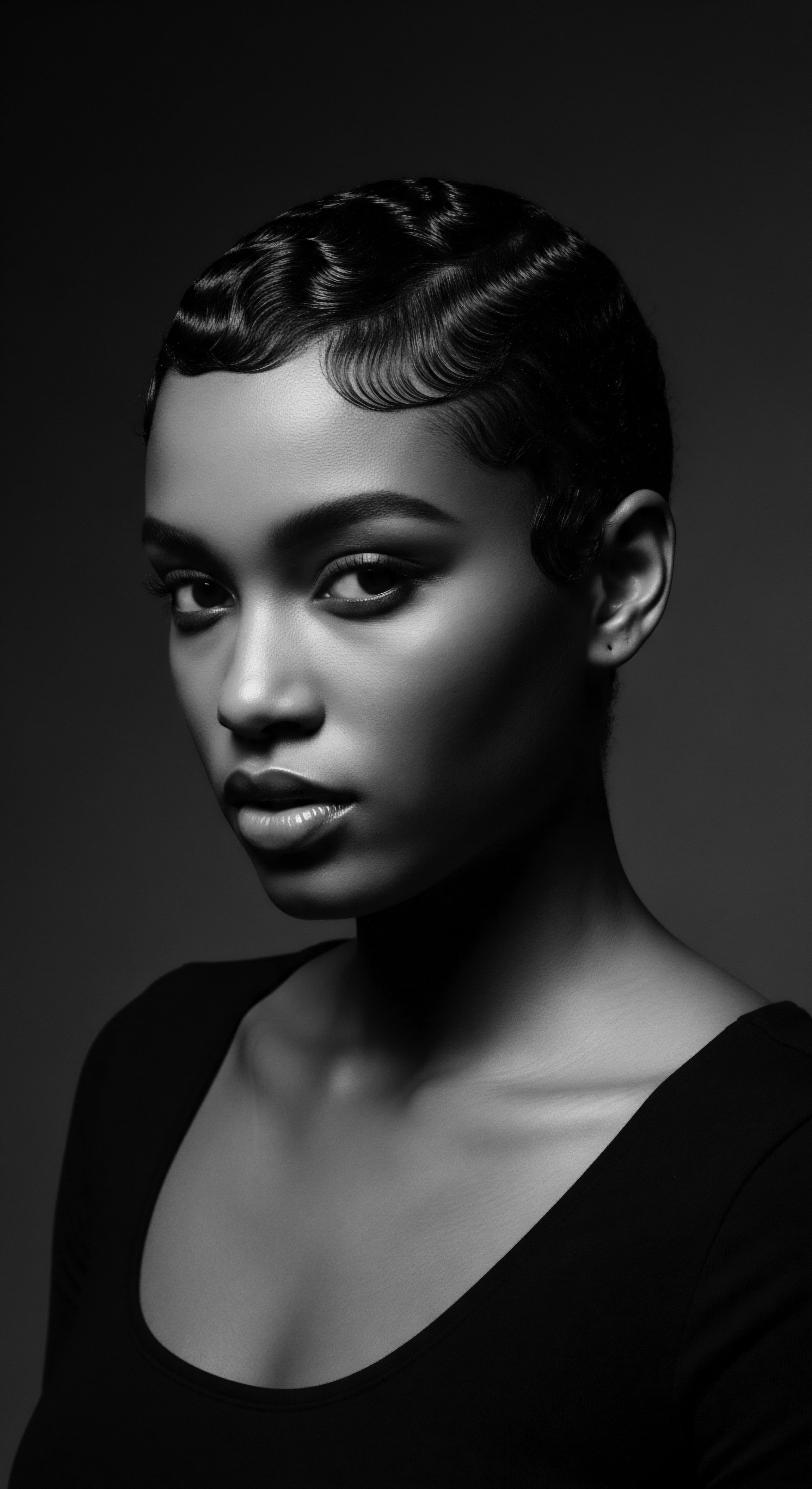
The Unbound Helix ❉ Identity, Agency, and Future Narratives
In contemporary times, the Hair Regimen for textured hair continues to be a powerful vehicle for self-expression, self-acceptance, and community solidarity. The depth of its meaning extends to psychological well-being, as individuals navigate their unique hair journeys. Research indicates that the relationship between hair and identity for Black women is profound, influencing self-perception and social interactions (Banks, 2000; Jacobs-Huey, 2006). The act of tending to one’s textured hair through a mindful regimen becomes a daily affirmation of self-worth, particularly in a world that still grapples with biases against natural hair in various professional and social settings.
The modern Hair Regimen for textured hair is thus a convergence of historical memory, scientific understanding, and personal agency. It involves discerning the specific needs of one’s coils and kinks, selecting products (often drawing from a rich tradition of natural ingredients), and implementing practices that promote health and vitality. This can include:
- Low-Manipulation Styling ❉ Opting for styles that require minimal daily handling to prevent mechanical damage, such as braids, twists, or locs, directly mirroring protective practices from antiquity.
- Moisture Layering ❉ Applying hydration in specific sequences (e.g. water, leave-in conditioner, oil, cream) to seal moisture effectively, a sophisticated extension of ancestral oiling and butting techniques.
- Scalp Health ❉ Recognizing the scalp as the foundation of healthy hair, incorporating treatments and massage that encourage blood circulation and a balanced microbiome, aspects intuitively understood in traditional healing practices.
- Ingredient Consciousness ❉ Prioritizing ingredients that have historical efficacy and are aligned with hair’s biological needs, from ancestral oils like Marula Oil and Shea Butter to modern formulations that respect the delicate structure of textured hair.
This deliberate, personalized approach speaks to a deep appreciation for the hair’s ancestral story. The Hair Regimen for textured hair, then, is an ongoing process of discovery and reclamation. It supports not only physiological hair health but also psychological fortitude, allowing individuals to carry their heritage with pride and express their authentic selves. The journey of the Hair Regimen, from ancient communal rituals to contemporary self-care practices, serves as a powerful testament to the enduring spirit and inherent beauty of Black and mixed-race hair.
| Era/Context Pre-Colonial Africa |
| Traditional Practice & Hair Regimen Aspects Communal Braiding & Oiling Rituals ❉ Hair styling as social communication (status, age, tribe) and spiritual connection. Use of shea butter, plant oils, and chébé powder for moisture and protection. |
| Modern/Scientific Link & Continued Relevance Emphasizes protective styling (low manipulation), moisture sealing, and the use of natural emollients. Scientific validation of ingredients for hair shaft integrity and length retention. |
| Era/Context Transatlantic Slave Trade & Post-Emancipation |
| Traditional Practice & Hair Regimen Aspects Forced Shaving & Hidden Braids ❉ Dehumanization through hair removal; resistance through covert braiding for identity and survival. |
| Modern/Scientific Link & Continued Relevance Demonstrates hair's profound link to identity and resistance. Modern regimens acknowledge historical trauma, promoting self-acceptance and decolonization of beauty standards. |
| Era/Context Mid-20th Century (Civil Rights/Black Power) |
| Traditional Practice & Hair Regimen Aspects The Afro & Natural Hair Movement ❉ Rejection of Eurocentric standards; embrace of natural texture as a political statement and symbol of collective pride. |
| Modern/Scientific Link & Continued Relevance The Hair Regimen becomes a conscious act of political and cultural self-expression. Reinforces the importance of healthy, natural hair care as a form of empowerment. |
| Era/Context Contemporary Era |
| Traditional Practice & Hair Regimen Aspects Personalized Regimens & Community Building ❉ Tailored product selection, diverse styling, online communities supporting natural hair journeys. |
| Modern/Scientific Link & Continued Relevance Combines ancestral wisdom with scientific understanding, allowing for individualized, effective care. Social media amplifies communal support, reflecting historical communal grooming. |
| Era/Context This table illustrates the continuous journey of Hair Regimen, adapting through historical challenges while preserving its core cultural and biological understanding, rooted in ancestral knowledge. |
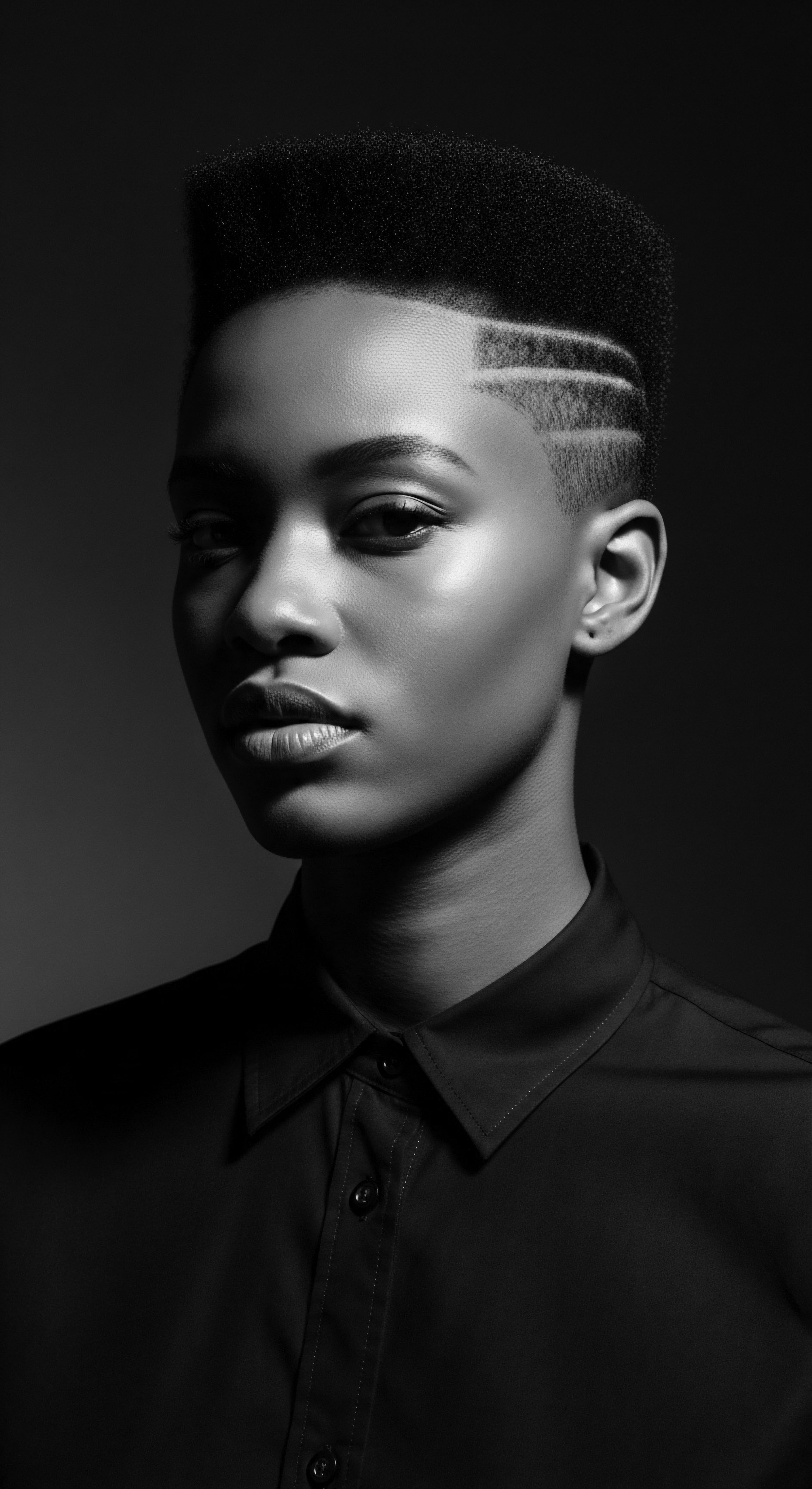
Reflection on the Heritage of Hair Regimen
The journey through the meaning of the Hair Regimen, from its fundamental understanding to its deep academic and cultural interpretations, reveals a profound truth ❉ it is more than a mere collection of steps for hair care. It is a living testament to the human spirit, especially within the context of textured hair and its vibrant communities. The Hair Regimen, deeply rooted in ancestral practices, has always been a conversation between the individual and their heritage, a whisper of wisdom passed down through generations. It carries the echoes of communal grooming under ancient skies, the quiet resistance in hidden braids during times of profound oppression, and the joyful assertion of identity in moments of liberation.
Every application of an ancestral oil, every careful detangling session, every chosen protective style, speaks volumes about a continuous thread of resilience and beauty. The Hair Regimen is a purposeful act of preserving cultural legacy, affirming self-worth, and connecting to the very earth that provided the first elements of care. It reminds us that our hair, in all its majestic textures and forms, is a sacred part of our being, a story etched in every curl and coil.
As we engage with our regimens, we are not simply tending to strands; we are honoring a rich, unbroken lineage of care, resilience, and profound beauty. This ongoing commitment to the Hair Regimen ensures that the soul of each strand remains unbound, a beacon of heritage shining brightly into the future.

References
- Byrd, A. & Tharps, L. (2014). Hair Story ❉ Untangling the Roots of Black Hair in America. St. Martin’s Griffin.
- Dabiri, E. (2020). Twisted ❉ The Tangled History of Black Hair Culture. Penguin Books.
- Jacobs-Huey, L. (2006). The practice of freedom ❉ Language, culture, and power in the hair care narratives of African American women. John Benjamins Publishing.
- Johnson, L. C. & Bankhead, T. (2014). The politics of Black women’s hair ❉ An examination of the perceptions of African and African American women. Journal of Black Studies, 45(4), 263-282.
- Kuumba, M. B. & Ajanaku, F. (1998). Dreadlocks ❉ The hair aesthetics of cultural resistance and collective identity formation. Mobilization ❉ An International Quarterly, 3(1), 89-106.
- Patton, T. O. (2006). Hey Girl, Am I More Than My Hair? ❉ African American Women and Their Struggles with Beauty, Body Image, and Hair. NWSA Journal, 18(2), 24-51.
- Rooks, N. M. (1996). Hair Raising ❉ Beauty, Culture, and African American Women. Rutgers University Press.
- Tharps, L. L. & Byrd, A. D. (2001). Hair Story ❉ Untangling the roots of Black hair in America. St. Martin’s Press.
- Thompson, S. H. (2009). The Black women’s hair movement ❉ A qualitative investigation of contemporary Black women’s experiences with hair. Feminist Formations, 21(3), 1-28.
- White, S. & White, G. (1995). Slave Hair and African-American Culture in the Eighteenth and Nineteenth Centuries. The Journal of Southern History, 61(1), 45-76.
